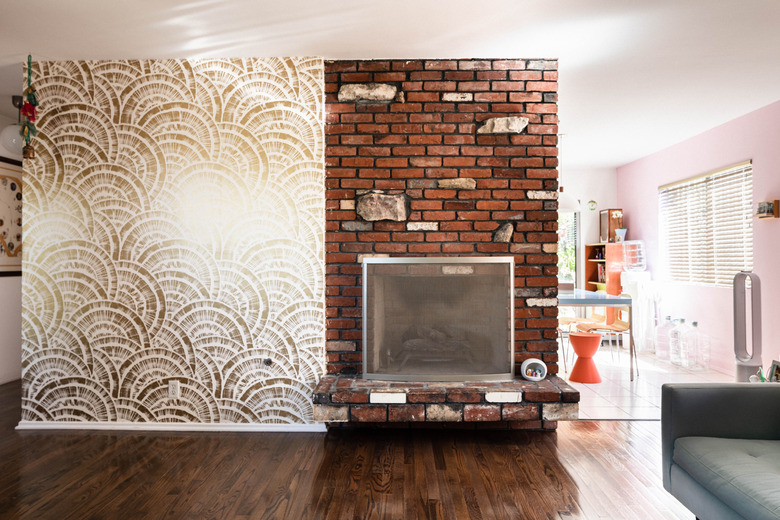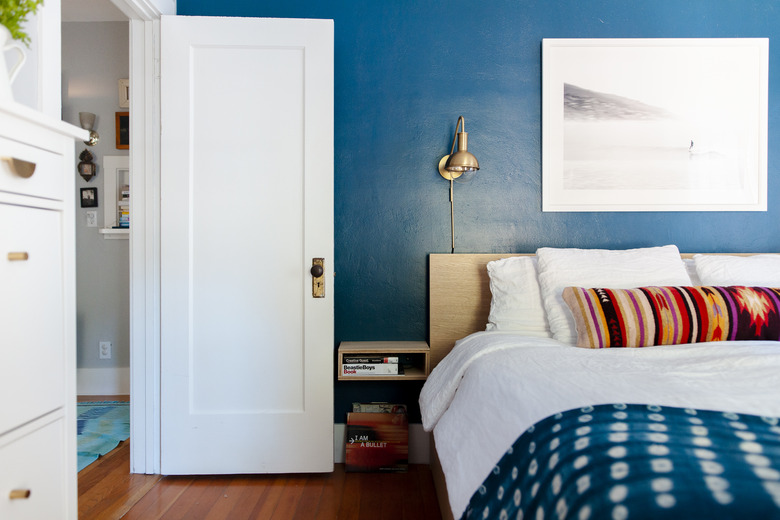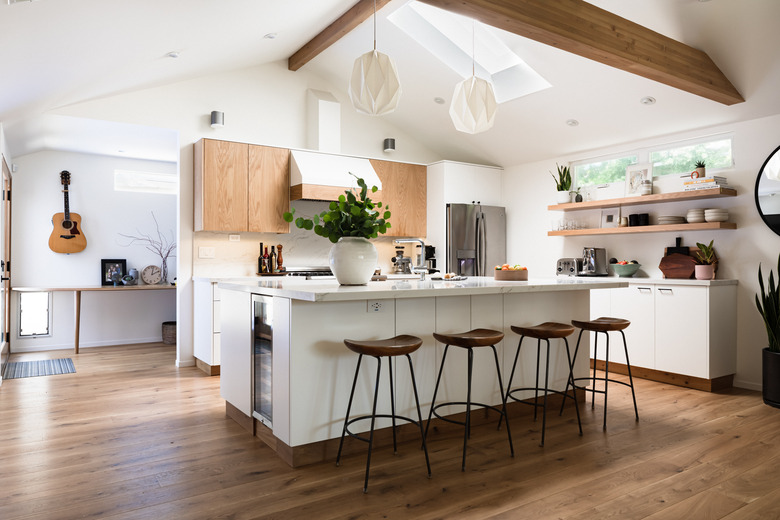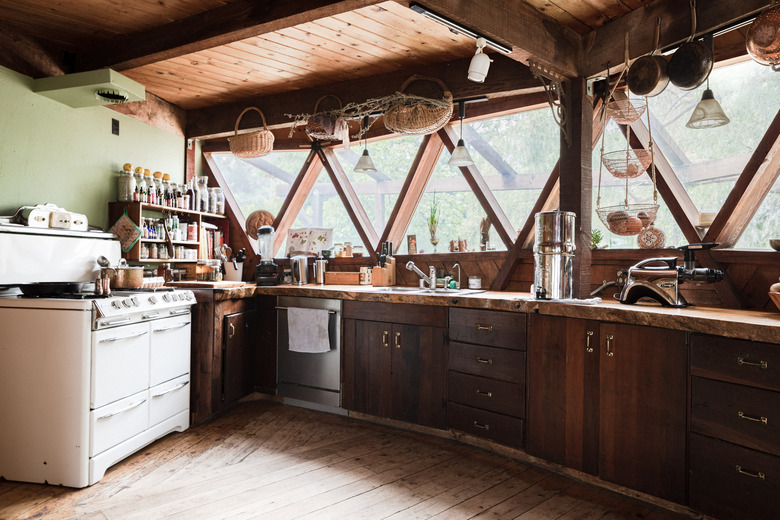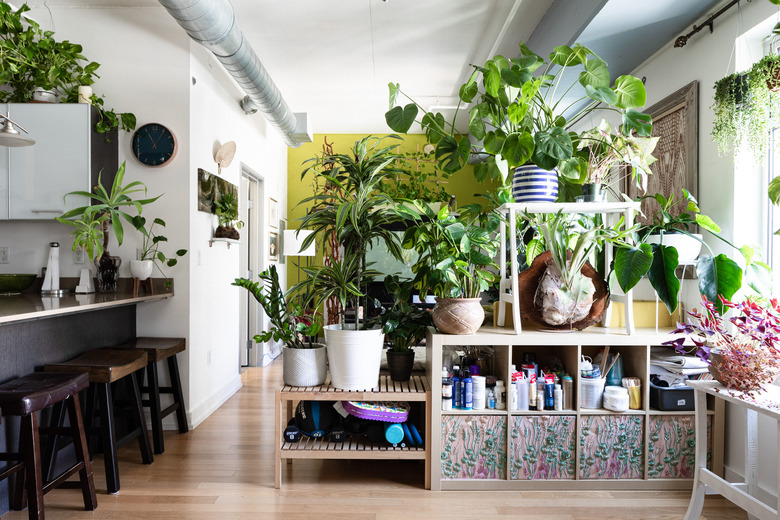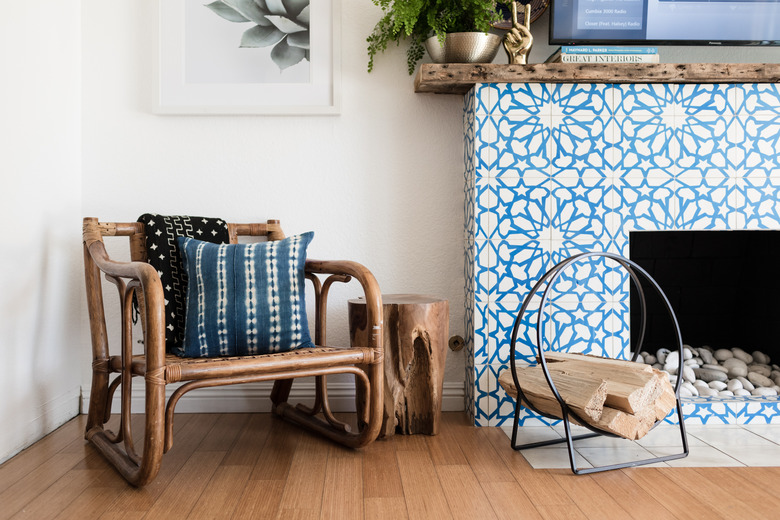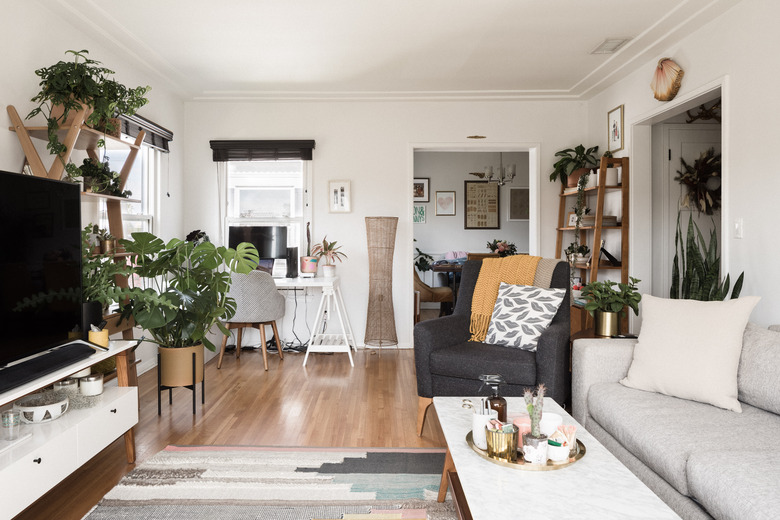Types Of Hardwood Floors: A Homeowner's Guide
Deciding on a flooring material is often only half the battle. If you've chosen hardwood flooring as the material for your next home improvement project, you still have a few more decisions left to make. There are different types of hardwood available and an even bigger range of options when it comes to wood species and styles. New flooring is a big investment, which is why it's so important to do your research and choose the type of hardwood flooring that is best suited to your unique needs.
Solid Wood Flooring
Solid Wood Flooring
Solid wood flooring is a natural material made from one piece of wood. There are two kinds of solid hardwood floor options: strip and plank flooring, each of which is available in either unfinished or prefinished form. Unfinished solid hardwood requires sanding and finishing after floor installation. Prefinished solid hardwood, on the other hand, is sanded and finished before it leaves the factory and only needs to be installed, which makes it the more popular hardwood.
Strip flooring is a kind of solid hardwood floor that is often shorter and narrower, because it's not milled from the main trunk of the tree — it often comes from the limbs and other less desirable locations. According to HowStuffWorks, strip flooring has limited width availability, which makes it the most narrow solid hardwood option. While the thickness for strip flooring ranges from 5/16- to 3/4-inch wide, the plank widths are only available in 1 1/2 inches, 2 inches and 2 1/4 inches.
Plank flooring is milled from a tree's trunk, making it wider than its strip flooring counterpart. It comes in only two thicknesses of 1/2 inch or 3/4 inch, but the width options range from 3 inches to 8 inches. Wider flooring planks create a more open look because there are fewer seams in the wood.
The geometric patterns that make up parquet flooring make it the most unique kind of solid hardwood option. Parquet flooring is made by securing small pieces of hardwood together in distinct patterns to create a dramatic or elaborate design.
Advantages of Solid Wood Flooring
Advantages of Solid Wood Flooring
While solid hardwood flooring can be a costly investment, it does seem to be one that is worthwhile. Solid hardwood flooring can increase the market value of your home, which is an important consideration if you plan to sell your house in the future.
Another benefit of solid wood flooring is that each plank is a slightly different shade, which leaves plenty of room to get creative by mixing and matching colors to give your floor a unique look. Solid hardwood flooring is also a long-lasting option that can be sanded and refurbished to rejuvenate it as often as necessary. Maintaining a solid hardwood floor is as simple as keeping it dry and clean of debris.
Disadvantages of Solid Wood Flooring
Disadvantages of Solid Wood Flooring
One of the biggest drawbacks of solid hardwood flooring is that it is susceptible to humidity and temperature changes. Planks can swell in damp weather or shrink in response to a warm and dry climate. The initial cost can also be a disadvantage for some lower-budget projects because solid hardwood is more expensive than other flooring options.
Since wood is the diet of choice for termites, solid hardwood is vulnerable to termite attack. Check your floors for termite damage frequently to avoid an undetected infestation. Additionally, wood and water or harsh detergents do not mix. Light mopping is OK, but don't use an overly wet mop or allow water to sit on the surface for long periods of time because this can seep into the floor and cause damage.
If you're looking for a low-maintenance floor, solid hardwood is probably not for you because it needs to be polished at least every three or four years. Solid wood flooring is also prone to scratches, dents and stains, which is an important consideration if you have pets or kids. It can also fade, so keep it away from direct sunlight exposure.
Engineered Wood Flooring
Engineered Wood Flooring
Unlike solid hardwood, which is made from one piece of natural wood, engineered hardwood is made by fusing a thin veneer of wood to layered wood slices. Each layer is positioned in a different direction to create a crisscrossing effect that strengthens the construction of the floorboard.
The veneers in engineered wood floors are prefinished in the factory, so the floors come ready for installation. Engineered hardwood flooring uses decorative stains and protective coatings to enhance durability, and the hardwood veneer helps maintain its natural appearance. The bottom layer of engineered wood and the crisscross position of each layer above it help make it stronger than solid hardwood and more resistant to changes in humidity levels.
Don't confuse engineered hardwood with engineered laminate flooring. Engineered hardwood uses only real wood, whereas engineered laminate combines real wood with plastic laminate.
Advantages of Engineered Wood Flooring
Advantages of Engineered Wood Flooring
If you're interested in hardwood flooring but are worried about moisture and humidity levels, engineered hardwood might be the right choice for you. Floor Critics applauds the multilayer construction of engineered wood flooring because it makes it more resistant to moisture and fluctuations in humidity levels than solid hardwood.
It is important to note that engineered wood is not completely immune to moisture and can still warp and buckle if subjected to extreme conditions, but its construction does give it more endurance in humid conditions than solid hardwood would have.
When it comes to ease of installation, engineered wood flooring trumps solid hardwood because it can be installed on virtually any subfloor, and there are more options for installation methods, which makes it a great choice if you plan to install your new flooring as a DIY home improvement project. Engineered wood flooring also increases the market value of a home and can be refinished, though the planks lose durability after a few refinishes.
Disadvantages of Engineered Wood Flooring
Disadvantages of Engineered Wood Flooring
Engineered hardwood has many of the same disadvantages as solid wood flooring. Like solid hardwood, price is often a disadvantage for low-budget flooring projects because it is more expensive than laminate or other flooring options. Engineered wood flooring is also prone to scratches, dents and fading.
Cutting corners by choosing a cheaper manufacturer could end up costing more in the long run because some manufacturers use oriental strand board, fiberboard or other low-quality materials that negatively influence the long-term durability of their products.
Fortunately, you can avoid cheap imitations by knowing what to look for. Engineered floors of high quality will have plywood cores with stable dimensions that are designed to tolerate fluctuations in temperature. Make an informed purchase by researching both the manufacturer and the construction process before buying.
One issue that pertains to engineered wood flooring but not to solid hardwood is the potential for off-gassing from engineered floor products. Off-gassing is the release of gasses from the chemicals (volatile organic compounds, or VOCs) in the flooring material. Many adhesives and sealers used in the construction of engineered wood contain formaldehyde and other carcinogens that convert to a gas that can cause health issues, particularly for people with sensitive immune systems. When shopping for engineered wood, look for products that have been rated and certified as free from formaldehyde and VOCs.
Hardwood Species Options
Hardwood Species Options
From exotic species to common ones, there is no shortage of options for hardwood species from which to choose. Since each type of hardwood has unique patterns, color variations and features, knowing the difference between the most common species of hardwood can help you decide which one is right for you. It's also important to consider the Janka rating for your wood species, which is a score of its hardness — or how well it will fend off dents and scratches.
- Hickory is a type of wood with a closed grain pattern and colors
ranging from medium tan or light reddish brown to a creamy white. It is like
pecan wood and has an above-average Janka rating of 1,820. - White oak is characterized by its pale-brown color with a
pinkish or grayish cast. The grain pattern on white oak is open, with long rays
that may also have swirls and tight knots. The Janka rating for white oak is
1,210, which puts it just below the median on the hardness scale. - Red oak is a name that applies to more than 200 subspecies
that are differentiated by their color variation and tight grain pattern. Red oak
is known for its reddish tone, though the wood itself is light in color. Northern
red oak has a Janka rating of 1,290, which serves as the benchmark average
rating. Southern red oak, on the other hand, scores a softer rating of 1,060. - Brazilian cherry wood has a coarse grain texture and
reddish colors with darker streaks. With a Janka rating of 2,820, Brazilian
cherry is one of the most durable types of hardwood and can easily withstand
high-traffic areas. - Teak is a wood species from the tropical regions of southeast
Asia that boasts medium golden-brown colors with streaks of darker brown. With
a Janka rating of about 1,000, teak is one of the softer hardwood species.
References
- HowStuffWorks: Ultimate Guide to Hardwood Flooring
- Architecture Lab: 10 Pros and Cons of Hardwood Flooring You Should Know
- Floor Critics: Engineered Hardwood Flooring: Reviews, Best Brands & Pros vs. Cons
- Floor Critics: Hardwood vs Engineered Hardwood Flooring
- Home Flooring Pros: Parquet Flooring – The Definitive Guide
- Old House Journal Online: Wood Flooring Questions Finally Answered
- BuildDirect: Hardwood Species
- MacDonald Hardwoods: What Is a Janka Hardness Rating and How Important Is It?
